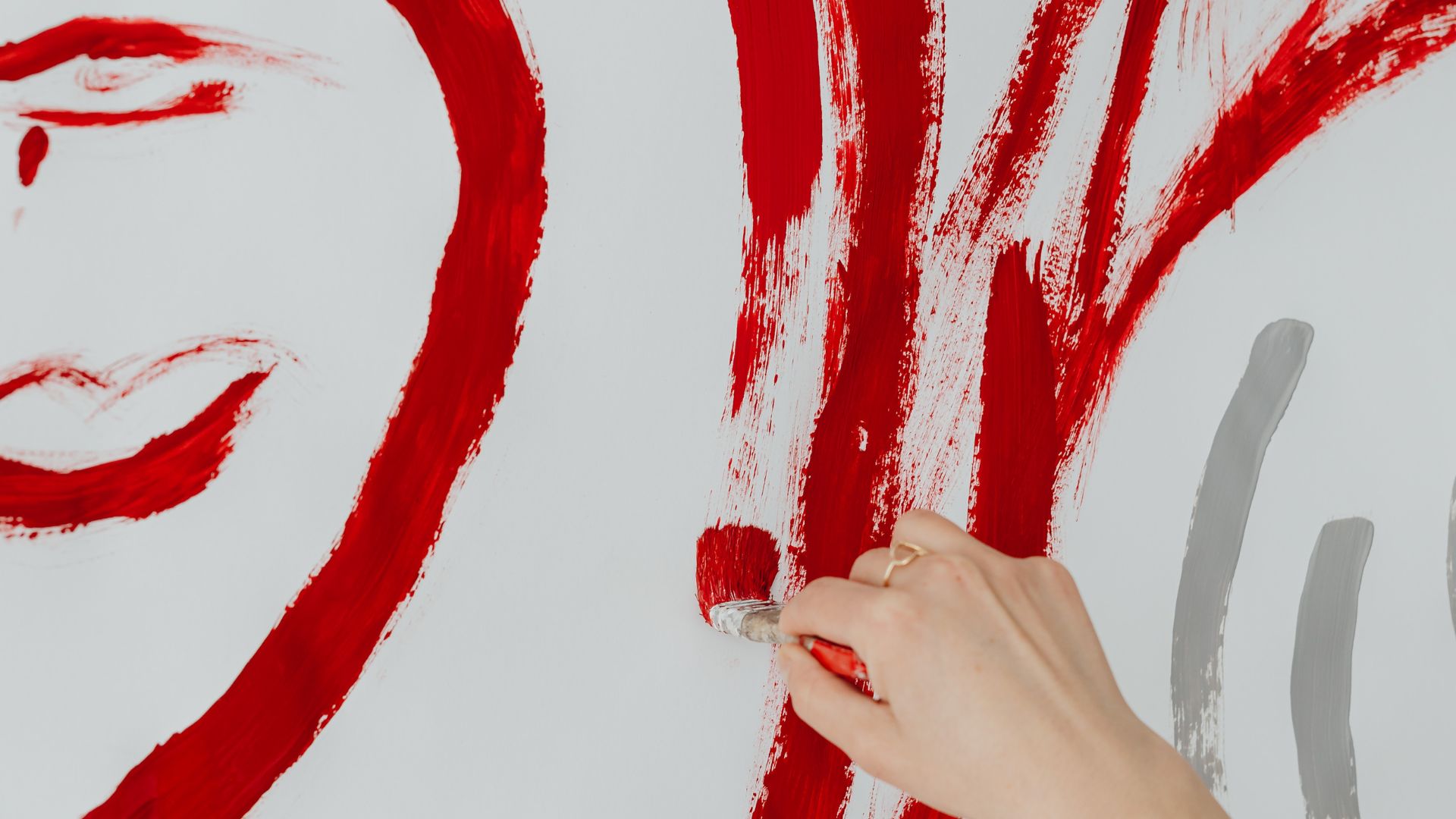Understanding the Canvas Surface
Canvas, traditionally used for oil or acrylic paints, differs from walls in texture and material. While walls are typically smooth and made of materials like drywall or plaster, canvases have a textured surface woven from fabric.
Painting on a Raw Canvas
When using wall paint on a raw canvas without any preparation, the paint might not adhere properly. The canvas’s absorbent surface can soak up the paint, leading to uneven coverage and an unsatisfactory finish. This is where sanding can come into play.
Sanding the Canvas
Sanding the canvas before painting can create a smoother surface, reducing the fabric’s absorbency. This process involves lightly sanding the canvas with fine-grit sandpaper to minimize the texture and create a more even base for the paint.

Factors to Consider
- Canvas Type: If you’re using a pre-primed canvas designed for acrylic or oil paints, sanding might not be necessary as it typically comes with a prepared surface.
- Paint Type: Wall paint differs from artist-grade acrylic or oil paints. Wall paint contains binders and additives that may not adhere well to a canvas, even with sanding.
- Desired Finish: The finish you want can also influence whether sanding is necessary. If you’re aiming for a textured or rough appearance, sanding might not align with your artistic vision.
So,…
In general, if you’re set on using wall paint on canvas, consider testing a small section first. Sanding can help create a smoother surface for better adhesion, but it might alter the canvas’s texture. Always take into account the type of canvas, the paint you’re using, and the desired outcome before deciding whether to sand.
External Resources:
Diving deeper into this topic can provide a clearer understanding of the nuances involved in painting on canvas with wall paint.
Factors Influencing the Decision to Sand
Absorbency of the Canvas
Canvas, especially raw or unprimed canvas, tends to be highly absorbent. This absorbency can cause wall paint to be absorbed unevenly, leading to patchy or streaky results. Sanding helps reduce this absorbency, providing a more consistent surface for painting.
Type of Wall Paint
Wall paints contain various additives like primer and binders designed specifically for walls. These additives may not adhere well to the canvas surface, even with sanding. Artist-grade paints, on the other hand, are formulated to adhere to canvas surfaces better, requiring less preparation.
Surface Texture
The texture of the canvas also plays a significant role. Some artists intentionally embrace the canvas’s texture to add depth and character to their paintings. Sanding diminishes this texture, potentially altering the intended artistic effect.
Alternatives to Sanding
If you’re hesitant about sanding or concerned about altering the canvas texture, priming the canvas with a suitable primer might be an alternative. Primers create a barrier between the canvas and the paint, improving adhesion without significantly altering the texture.
Testing and Experimentation
Art is often about exploration and experimentation. Consider testing different techniques on small sections of the canvas to see how the wall paint reacts. This experimentation can provide valuable insights into how the paint interacts with the canvas surface.
Final Thoughts
In the realm of art, there are no strict rules set in stone. The decision to sand a canvas before painting it with wall paint ultimately depends on various factors, including personal preference, desired outcome, and experimentation.
The beauty of art lies in the process, so feel free to explore and find what works best for your creative vision.
External Resources:
Comparison tabular on this
| Factors | Sanding the Canvas | Priming the Canvas |
|---|---|---|
| Absorbency of Canvas | Reduces absorbency for more even paint application. | Creates a barrier to prevent uneven absorption. |
| Impact on Texture | Smoothes canvas texture, altering the surface. | Minimally affects texture, maintains canvas texture. |
| Adhesion of Wall Paint | Improves adhesion of wall paint to the canvas. | Provides a surface for better paint adhesion. |
| Type of Wall Paint | May help, but wall paint additives may still pose adhesion issues. | Can mitigate adhesion problems caused by wall paint additives. |
| Preparation Time | Requires additional time for sanding process. | Requires time for application and drying of primer. |
| Artistic Impact | Alters the canvas texture, affecting artistic intent. | Less impact on canvas texture, maintains intended texture. |
| Ease of Application | Needs careful sanding to avoid over-smoothing. | Requires careful application to ensure even coverage. |
| Experimentation Friendly | Can be less forgiving if not done correctly. | Allows for testing different primers before painting. |
Remember, the choice between sanding or priming a canvas before painting with wall paint depends on personal preferences, artistic goals, and the specific materials being used. Experimentation and testing small sections of the canvas can provide valuable insights into the best approach for your project.
Wrapping up
When it comes to painting on canvas with wall paint, the decision to sand or prime is a balancing act between achieving better adhesion and preserving the canvas’s texture and intended artistic effect.
Sanding offers improved paint adhesion by reducing the canvas’s absorbency, but it alters the texture, potentially impacting your artistic vision. On the other hand, priming maintains the canvas’s texture while creating a barrier for better paint adherence, yet it requires careful application and drying time.
Ultimately, there’s no one-size-fits-all answer. Embrace experimentation, test small sections, and find the approach that aligns best with your artistic goals. Whether you opt for sanding or priming, the journey of exploring different techniques adds depth and character to your creative process.
Remember, the beauty of art lies not only in the finished piece but also in the unique journey each artist takes to bring their vision to life. So, trust your instincts, explore different methods, and let your creativity flourish on the canvas!
Happy painting!

For over a decade, I’ve been Mike, an artist, crafter, and designer deeply immersed in the Croc world. I thrive on crafting unique, size-inclusive patterns, fostering creativity, and sharing them on ktforum.com. My designs aim to ignite your creative spark and delight you, ensuring clarity and ease of use through rigorous testing. Join me in expressing your creative flair and showcasing your craft with joy.
Related Posts
- Do you need to prime the canvas before using wall paint on it?
When it comes to transforming a canvas into a stunning work of art, the foundation…
- Can You Paint Over Existing Wall Paint on Canvas
If you're an aspiring artist or someone enthusiastic about trying their hand at painting, you…
- Testing Wall Paint on Canvas: A Smart Approach to Your Painting Project
When it comes to transforming a canvas into a masterpiece, choosing the right paint is…
- Techniques for using wall paint on canvas
Painting on canvas with wall paint can yield fantastic results, but it requires a few…

